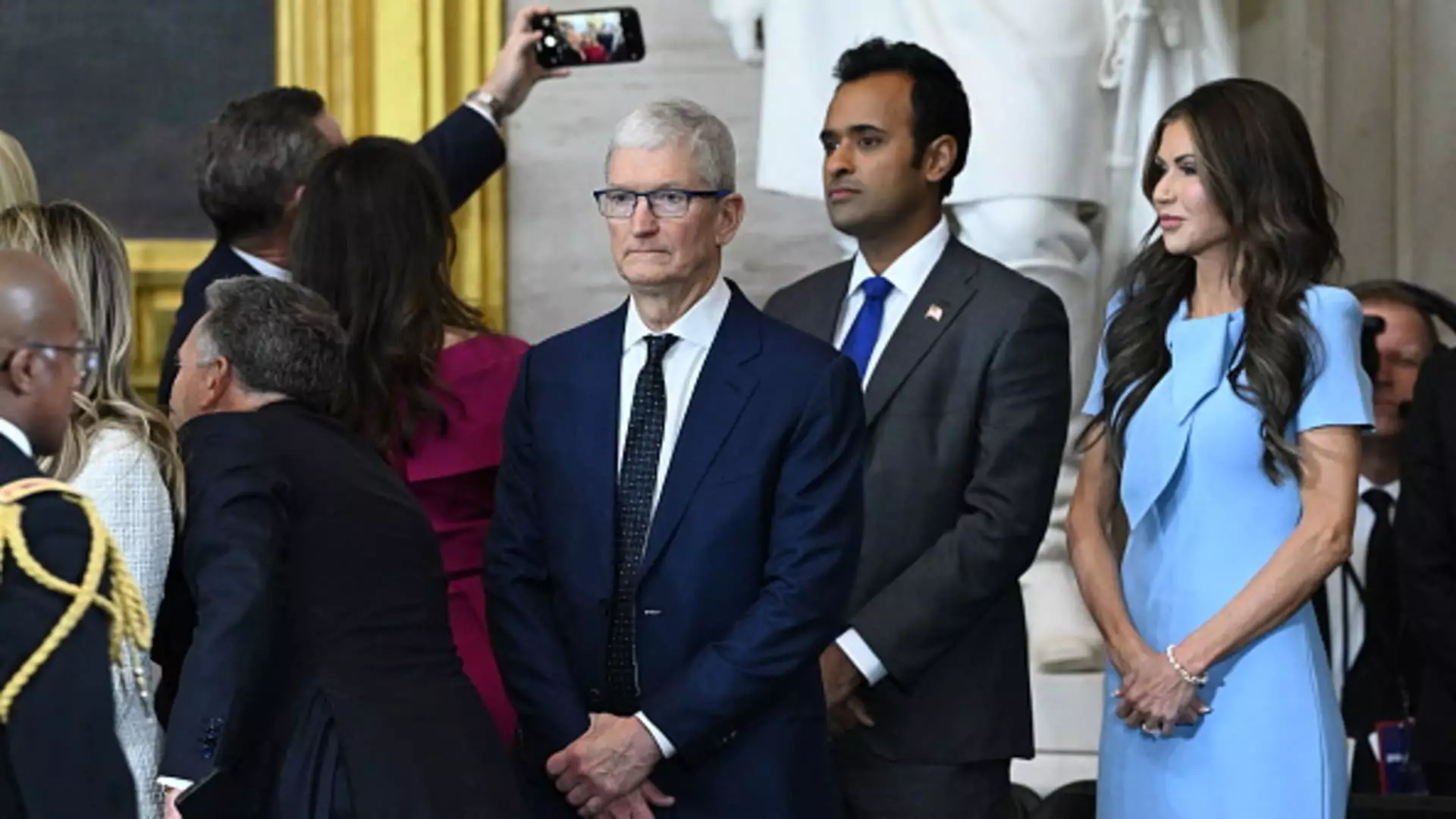Tim Cook’s recent earnings call for Apple, despite showing a fiscal performance that surpassed Wall Street expectations, reveals an unsettling reality. For all of its market dominance and innovation, Apple can’t escape the ramifications of tariffs imposed by the Trump administration. Cook shared that the company experienced only a “limited impact” from these tariffs in the first quarter of the year, but projections for the coming quarter indicate potential costs of about $900 million. This figure, while staggering, was lower than what analysts had anticipated, highlighting the disconnect between expectations and the harsh impact of unpredictability in corporate forecasting. However, it’s this very unpredictability that could shake even a powerhouse like Apple to its core.
A slight drop in stock prices following the call shows that investors’ appetite for uncertainty is dwindling. The lack of clarity about future tariffs reflected in Cook’s comments felt like an uncharacteristic misstep for a company renowned for its meticulously crafted plans and operations. Investors are well aware that a sudden jolt in tariffs could undermine Apple’s careful supply chain strategies or shift the perception of company stability, casting shadows over even the brightest financial results.
Supply Chain Innovation: A Double-Edged Sword
Tim Cook is often lauded as a master of operations, but the complexities of global supply chains can be daunting, especially when they’re at the mercy of political tides. Cook cited the company’s successful attempts to mitigate tariffs by moving some sourcing from China to countries like India and Vietnam. Diversifying its supply chain is undoubtedly a smart move, yet there’s a disconcerting layer to this strategy.
While sourcing from India and Vietnam might alleviate immediate tariff pressures—10% tariffs versus the exorbitant 145% imposed on some Chinese imports—these countries are now also under scrutiny for potential tariff increases. The very countries that Apple is touting as a solution could quickly turn into liabilities. Cook’s celebrated operational prowess seems fortified against challenges, yet the looming threat of tariffs could easily topple this apple cart. In an age where agility can determine market viability, complacency—whether actual or perceived—could foster an environment ripe for disruption.
The Consumer’s Perspective: Indifference or Pragmatism?
While Cook has suggested that consumers are not rushing to purchase more Apple products in anticipation of price hikes due to tariffs, it’s worth considering whether this signifies indifference or a shrewd recognition of market dynamics. Apple’s products typically come with a premium price tag, and consumers may feel that enduring a price increase for a brand like Apple is not worth the wait. This perception could be a subtle rebuke to the company’s assumption of loyalty and demand, revealing a more complex and less predictable consumer landscape than Apple is accustomed to navigating.
The possibility of consumers favoring competitors who may offer more stable pricing amidst tariff turbulence cannot be underestimated. If the competition seizes this opportunity effectively, the consumer loyalty Apple has enjoyed could wane. In the tech industry, consumer preferences are notoriously fickle, and Cook’s optimism about consumer response could be misplaced.
The Burden of Future Uncertainty
The looming questions surrounding future tariffs on Apple products, especially with technology like semiconductors under a microscope, exacerbate the company’s stress. In an environment where future constraints can pull the carpet from under businesses, Cook’s reluctance to provide guidance beyond the current quarter not only demonstrates prudence but also reflects a corporate anxiety that is palpable.
This hesitation is compounded by the fact that rival firms, such as Microsoft and Amazon, are also grappling with similar uncertainties. These companies are actively adjusting strategies, signaling that the tech giants share a common battlefield fraught with tariff anxieties. The very fabric of industrial strategy is entangled with governmental whims, revealing how macroeconomic policies can truncate the potential for growth and stifle forward momentum within companies that ought to be thriving.
The Costs of complacency: The Investor Sentiment
Ultimately, the real lesson from Cook’s earnings call echoes a sentiment of caution that extends far beyond just Apple. Investors and analysts were left with a sense of unease directly tied to the lack of assurances. Falling stock prices underscored a prevalent fear: that even behemoths like Apple, with their well-recognized operational capabilities, are vulnerable to forces beyond their control.
This situation could serve as a warning bell for industries ripe with reliance on global supply chains or those that underestimate the impact of political decisions on economic health. As investors scrutinize the fine print of fiscal reports, they must remain awake to shifts beyond the numbers. The tech landscape is changing, and unforeseen shifts, like those facilitated by tariffs, could render once-strong business frameworks fragile. The challenge for Cook and Apple now is to foster resilience against external pressures without losing the innovative spark that defines their brand.

